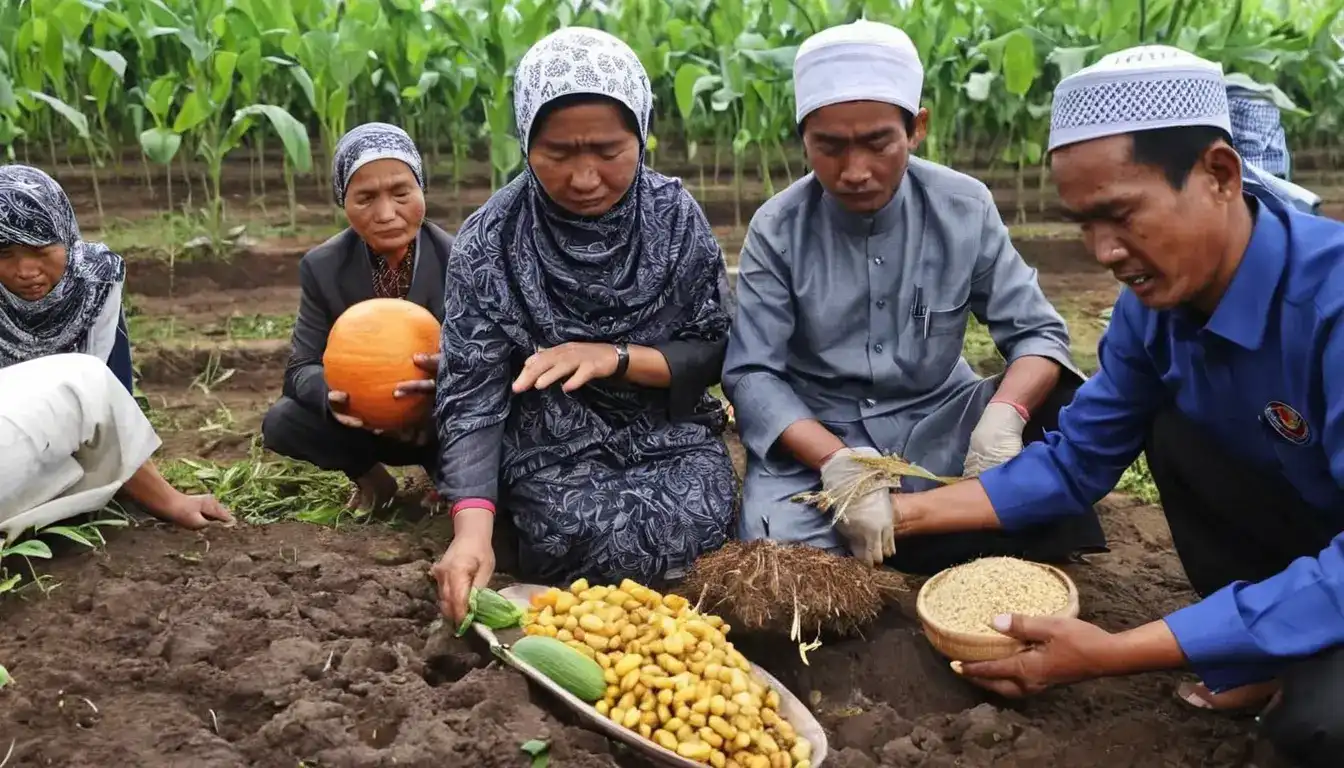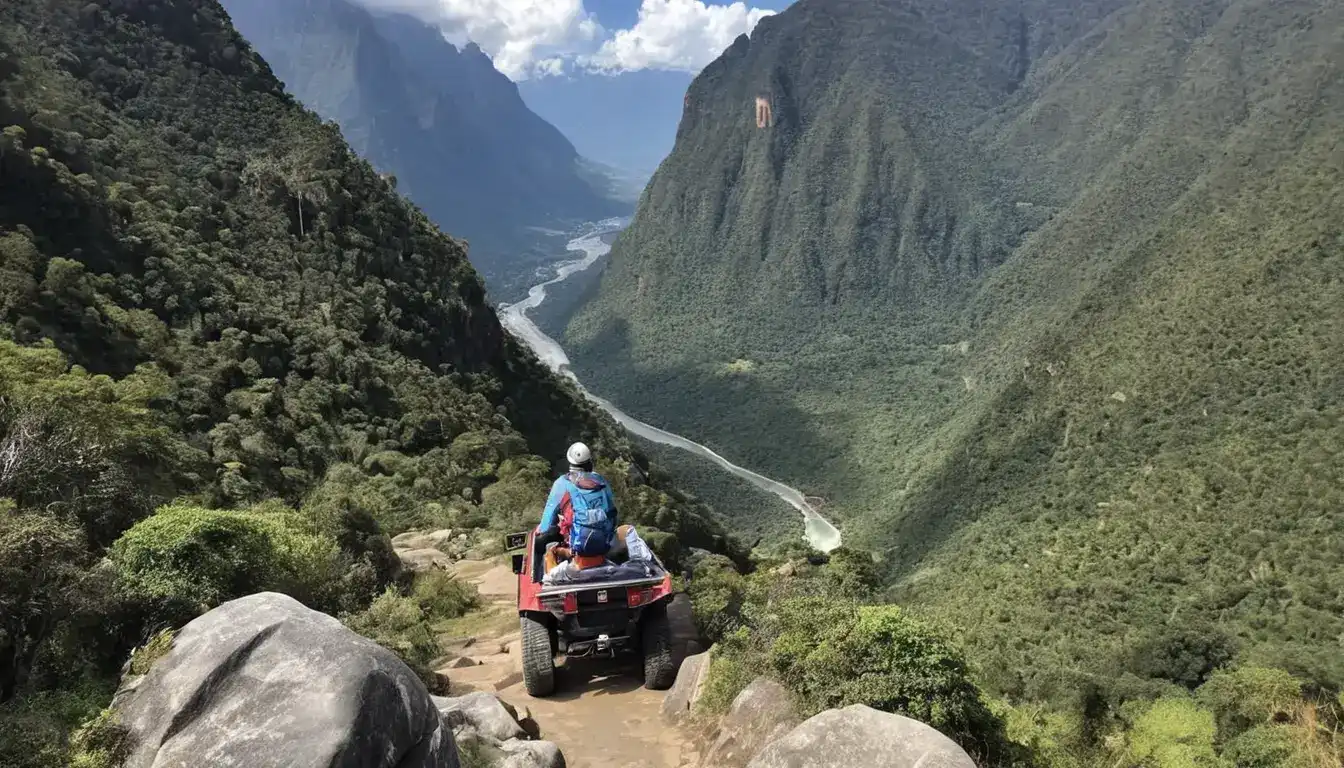Rural Economics: Challenges & Chances
Emily Willis

Photo: Rural Economics: Challenges & Chances
Rural Economics: Navigating Challenges and Unlocking Future Opportunities
Rural areas, often envisioned as tranquil landscapes of farms and close-knit communities, are vital arteries of the global economy. They are the bedrock of agricultural production, natural resources, and unique cultural heritage. However, behind this idyllic image lies a complex economic reality, marked by distinct challenges and burgeoning opportunities. Understanding rural economics is crucial not just for those who call these areas home, but for anyone interested in balanced regional development and national prosperity. This article delves into the intricate dynamics of rural economies, exploring the hurdles they face and the promising pathways to sustainable growth.
The Heart of Rural Economies: More Than Just Farmland
When we talk about rural economics, we're referring to the economic activities and systems that operate outside of densely populated urban centers. While agriculture remains a cornerstone, providing food and raw materials, modern rural economies are increasingly diverse. They encompass a range of sectors, including small businesses, manufacturing, tourism, and increasingly, technology-driven industries. These areas contribute significantly to national economic output and often hold undervalued assets that can be leveraged for future growth.
The health of rural communities is intrinsically linked to their economic vitality. Strong rural economies foster local employment, support essential services like schools and healthcare, and preserve the unique character and natural beauty of these regions. Conversely, economic decline can lead to population loss, reduced services, and a diminishing quality of life.
Major Challenges Facing Rural Economies
Despite their inherent value, rural economies grapple with a unique set of challenges that can hinder their development and resilience. These issues often stem from geographical isolation, demographic shifts, and historical underinvestment.
1. Economic Diversification and Industry Reliance
Many rural areas have historically relied heavily on a single industry, such as agriculture, mining, or forestry. While these sectors are crucial, over-reliance can make rural communities vulnerable to market fluctuations, climate change impacts, or shifts in global demand. For instance, changes in commodity prices can significantly impact farmers' livelihoods. The need for economic diversification is paramount to build resilience and create a more stable future.
2. Infrastructure Gaps: The Digital and Physical Divide
A persistent barrier to rural development is inadequate infrastructure. This includes both physical infrastructure like roads and transportation networks, and critically, digital infrastructure.
- Broadband Access: The "digital divide" is a significant economic chasm, with rural regions often having limited access to high-speed internet compared to urban centers. In 2024, global urban internet usage was nearly double that in rural regions. This lack of reliable broadband stifles economic potential, limiting opportunities for businesses, education, and healthcare. Rural areas with over 80% broadband adoption have seen 213% higher business growth and 10% more self-employment, demonstrating the transformative power of connectivity.
- Transportation: Limited public transportation and poor road networks make it difficult for rural residents to access jobs, education, and essential services, and for businesses to transport goods efficiently.
3. Access to Essential Services: Healthcare and Education
Rural communities often face significant disparities in access to quality healthcare and education, which are critical for human capital development and overall well-being.
- Healthcare Shortages: Rural areas tend to have worse health outcomes than cities, with higher rates of chronic diseases and lower access to healthcare professionals. While 20% of Americans live in rural counties, only 10% of doctors practice there. Hospital closures further exacerbate this challenge, with over 124 rural hospitals closing in the U.S. over the past 17 years.
- Education Disparities: Rural students often have reduced access to educational services, including well-equipped schools, libraries, and qualified teachers. This can lead to lower college enrollment rates and limit access to higher-skilled, higher-paying jobs, perpetuating a cycle of poverty.
4. Demographic Shifts: Aging Populations and Brain Drain
Many rural communities are experiencing an aging population, with a higher proportion of elderly individuals compared to urban areas. This demographic shift can lead to a shrinking labor force and increased dependency ratios, impacting agricultural production and the overall economy. Simultaneously, the "brain drain"—the exodus of young, educated individuals seeking better opportunities in urban centers—depletes the rural talent pool and hinders innovation and growth.
5. Access to Capital and Investment
Rural businesses and entrepreneurs often face greater challenges in accessing financing and investment compared to their urban counterparts. Higher relative fixed costs and weaker returns on investment can make operations more difficult and deter private sector interest. This limits the ability of rural economies to innovate, expand, and create new jobs.
Unlocking the Chances: Opportunities for Rural Growth
Despite these formidable challenges, rural areas possess immense potential for growth and resilience. Strategic investments, innovative approaches, and community-led initiatives can transform these regions into vibrant economic hubs.
1. Leveraging Technology and Digital Transformation
The expansion of high-speed internet is a game-changer for rural development.
- Remote Work and E-commerce: Reliable broadband enables remote work opportunities, allowing residents to access urban-based jobs without leaving their communities. It also empowers rural businesses to compete in global markets through e-commerce, expanding their customer base beyond local geographical limits.
- Precision Agriculture and Smart Farming: Technology can revolutionize agriculture, increasing efficiency, productivity, and sustainability through data analytics, automation, and advanced farming techniques.
- Online Education and Telehealth: Digital connectivity can bridge gaps in healthcare access through telemedicine, reducing travel burdens for patients and allowing rural hospitals to keep patients local. Online education also provides flexible learning opportunities, enabling rural students to pursue higher education and acquire new skills without relocating.
2. Sustainable Tourism and Recreation
Rural landscapes and natural amenities offer significant potential for sustainable tourism and recreation. This can create diverse income streams, support local businesses, and promote cultural heritage.
- Eco-tourism and Agritourism: Developing eco-tourism initiatives and agritourism (e.g., farm stays, vineyard tours) can attract visitors interested in authentic experiences and local products.
- Community-Led Initiatives: Engaging local communities in tourism planning ensures that development aligns with local values and that economic benefits remain within the community.
3. Renewable Energy Development
Rural areas are often ideal locations for renewable energy projects, such as wind farms and solar arrays, due to abundant land and natural resources.
- Economic Benefits: These projects can generate significant economic benefits for rural communities through land-lease payments to landowners, increased tax revenue for local jurisdictions, and the creation of new jobs in construction, operation, and maintenance. For example, in Illinois, renewable energy projects have provided $62.3 million annually in land-lease payments to farmers, ranchers, and private landowners.
- Energy Independence: Developing local renewable energy sources can reduce reliance on fossil fuels, leading to greater energy independence and environmental benefits.
4. Strengthening Local Entrepreneurship and Small Businesses
Fostering a vibrant entrepreneurial ecosystem is crucial for rural economic development.
- Support for Small Businesses: Policies and programs that provide access to capital, business training, and mentorship can help rural entrepreneurs start and grow businesses.
- Niche Markets and Value-Added Products: Rural areas can capitalize on niche markets by producing specialized goods, crafts, or value-added agricultural products (e.g., artisanal foods, local wines) that command higher prices.
5. Community-Led Initiatives and Policy Support
The most successful rural development strategies often involve strong community engagement and targeted policy support.
- Place-Based Strategies: Recognizing the unique assets and needs of each rural place is essential. Tailored economic development strategies that build upon local strengths, such as natural resources, cultural heritage, or specific industries, are more effective.
- Public-Private Partnerships: Collaboration between government agencies, private businesses, non-profit organizations, and local communities can unlock significant funding and expertise for rural development projects. Federal funding opportunities and grants, especially those focused on infrastructure and high-wage job creation, are critical.
- Talent Retention and Attraction: Strategies to attract and retain skilled workers, including creative housing solutions and place-making initiatives, are vital for a sustainable workforce. Online learning can also help mitigate brain drain by providing educational opportunities within the community.
Case Studies of Rural Resilience
Across the globe, numerous rural communities are demonstrating remarkable resilience and ingenuity in the face of economic challenges.
- Ralegan Siddhi, India: This village transformed from a drought-prone area to a self-sufficient model through watershed development and community participation, boosting agricultural production and creating employment.
- European Union's Rural Development Programme: This program supports projects to improve infrastructure, promote sustainable agriculture, and enhance rural tourism, demonstrating the impact of targeted investment.
- Bemidji, Minnesota, USA: A case study illustrates the positive economic impact of high-broadband adoption on rural communities, leading to increased business growth and per capita income.
Practical Steps for a Thriving Rural Future
For policymakers, community leaders, and individuals passionate about rural economic development, here are actionable steps:
- Invest in Broadband Infrastructure: Prioritize funding and implementation of high-speed internet across all rural areas. This is the foundational step for unlocking many other opportunities.
- Support Diversification: Encourage and incentivize businesses to explore non-traditional sectors and value-added
Latest ✨
View Allsecrets to mastering your business financial plan with five simple steps. Learn how to analyze financial data, set measurable goals, and create a comprehensive strategy for success. Unlock profitability, make confident decisions, and ensure a bright future for your business
Emily Willis
Fiscal policy is a crucial tool used by governments to influence economic activity and achieve various objectives. It involves decisions on government spending, taxation, and borrowing. During economic downturns, fiscal policy plays a key role in supporting recovery, stimulating demand, and promoting growth.
Emily Willis
Unpack GNP: Understand national wealth & global economic contributions. Learn how GNP differs from GDP & why it matters for a country's prosperity.
Emily Willis
Unlock personalized education! Adaptive learning paths use AI to tailor content, pace, & difficulty to your unique needs. Discover the future of learning.
Emily Willis
Business
View All
June 9, 2025
Budgeting Tips for Business ExpensesMaster your business finances! Discover essential budgeting tips to control expenses, improve cash flow, and drive sustainable growth for your enterprise.
Emily Willis

June 8, 2025
Master Your Business Cash FlowMaster cash flow! Understand its importance, how it differs from profit, and actionable strategies to boost your business's financial health.
Emily Willis

June 8, 2025
Scale Your Business SmartlyScale your business smartly for sustainable growth. Learn strategies to increase revenue efficiently, avoid common pitfalls, and build a robust enterprise.
Emily Willis
Economy
View AllInvolved in an Uber accident? Learn why hiring an Uber accident lawyer is crucial, what your legal options are, and how to choose the right attorney for your case
Read MoreUnlock the world of cross-border investment. Understand FDI, FPI, global trends & their economic impact. Navigate international capital flows effectively.
Read MoreUnderstand business cycles: master economic upswings & downturns. Make informed financial decisions, build resilience, and seize opportunities.
Read MoreEntertainment
View All
July 5, 2025
PR Coordinator Entry Level EntertainmentLights, Camera, PR! Your guide to becoming an entry-level PR Coordinator in entertainment. Discover essential skills & a roadmap to your dream career.
Emily Willis

August 5, 2024
VR and AR Transform EntertainmentVirtual reality (VR) and augmented reality (AR) are transforming the entertainment industry by offering immersive experiences that blur the lines between the real and virtual worlds. VR completely transports users into computer-generated environments, while AR overlays digital elements onto the real world.
Emily Willis

August 4, 2024
Recommended Movies and TV Series to Watch This Yearlist of recommended movies and TV series to watch this year. The movies include "Dune: Part Two," "Spider-Man: No Way Home," "The French Dispatch," "No Time to Die," and "Encanto." The TV series include "Stranger Things: Season 4," "The Mandalorian: Season 3," "The Witcher: Season 2," "Ted Lasso: Season 3," and "Loki: Season 2." Each entry includes reasons to watch, such as stellar cast, visually stunning cinematography, engaging plot, and character development.
Emily Willis
Health
View AllUnpack the Health Sciences Division! Learn how this critical, multidisciplinary field drives well-being, research, and global health progress.
Emily Willis
Quality sleep is essential for overall health and well-being, impacting physical, cognitive and emotional functioning. Lack of quality sleep can lead to a variety of health issues, including weakened immune function, heart problems, weight gain and cognitive impairment.
Emily Willis
Nutrition is crucial for maintaining overall body health, impacting energy levels, disease prevention, and overall well-being. A healthy diet includes fruits, vegetables, whole grains, proteins, healthy fats, and hydration. Proper nutrition positively affects energy levels, immune function, heart health, weight management, and mental health. Practical tips for improving nutrition include planning balanced meals, reading food labels, cooking at home, limiting processed foods, and staying hydrated. By prioritizing nutrition and making informed choices, individuals can enhance their health and well-being.
Emily Willis
Trending 🔥
View All
1
2
3
4
5
6
7
8
9
10
Lifestyle




Technology
View All
August 5, 2024
How to Protect Yourself from Cyber Security Threats in the Digital Age
The digital world has become an integral part of our lives, offering convenience, information, and connection. However, with this convenience comes an increased risk of cyber security threats. From identity theft to financial loss, the consequences of falling victim to a cyberattack can be devastating. Fortunately, by understanding the common threats and implementing effective protection measures, you can significantly reduce your risk.

August 5, 2024
The Impact of AI on the Future of Work and Education
AI is rapidly advancing and reshaping industries, economies, and societies, especially in the areas of employment and education. In the workplace, AI is changing roles through automation and creating new job opportunities. The future of work will most likely involve collaboration between humans and AI, requiring workers to develop new skills and engage in lifelong learning.

August 4, 2024
The Role of 5G Technology in Revolutionizing Communication
The introduction of 5G technology is set to revolutionize communication by offering faster speeds, lower latency, and increased capacity for connecting devices. This technology will impact various sectors such as healthcare, transportation, and entertainment. 5G enhances communication through faster speeds, lower latency, and increased capacity, enabling applications like remote surgery, autonomous vehicles, and high-quality streaming.

August 5, 2024
What is Blockchain and How does it Work?
Blockchain technology is a decentralized digital ledger that records transactions securely and transparently across multiple computers. Key concepts include decentralization, cryptographic security, and consensus mechanisms. Transactions are verified, grouped into blocks, and added to the blockchain through a consensus process.

















